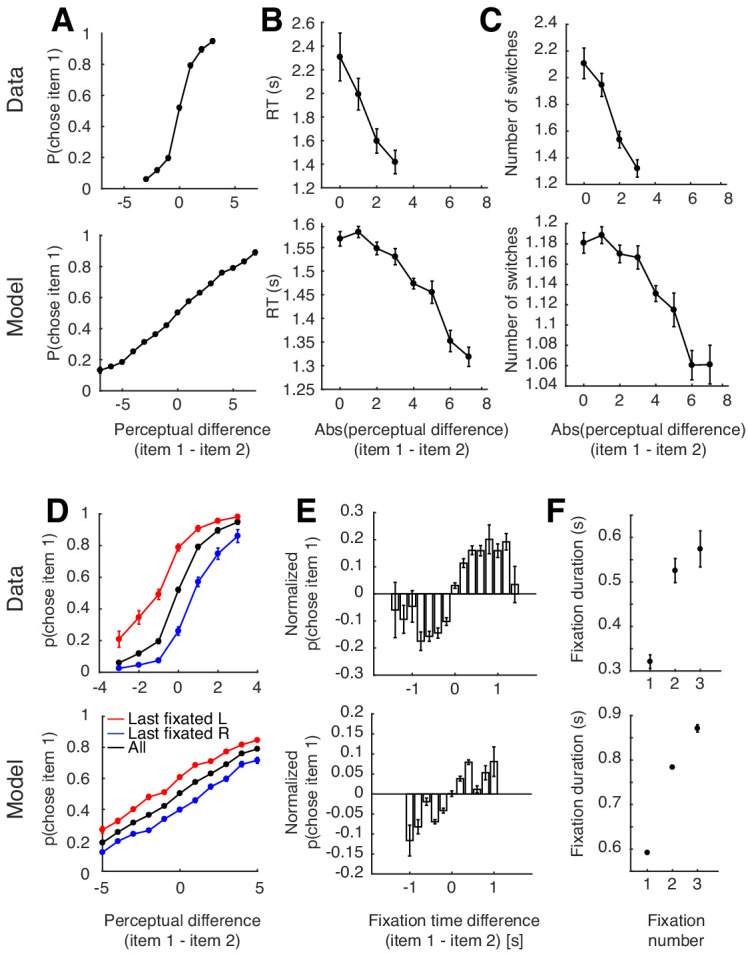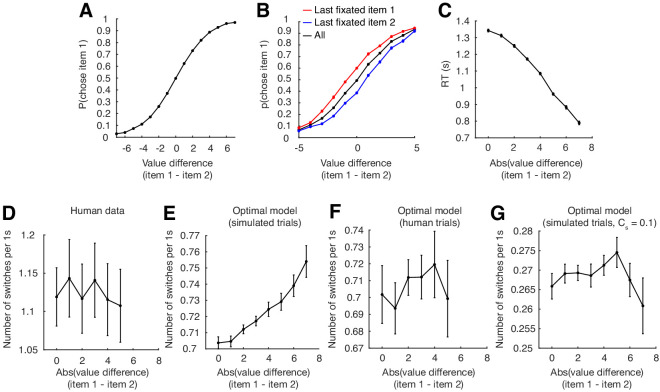Figure 3. Replication of human behavior by simulated optimal model behavior (Krajbich et al., 2010).
(A) Monotonic increase in probability of choosing item 1 as a function of the difference in value between item 1 and 2 (). (B) Monotonic decrease in response time (RT) as a function of trial difficulty (). RT increases with increasing difficulty. (C) Decrease in the number of attention switches as a function of trial difficulty. More switches are made for harder trials (). (D) Effect of last fixation location on item preference. The item that was fixated on immediately prior to the decision was more likely to be chosen. (E) Attention’s biasing effect on item preference. The item was more likely to be chosen if it was attended for a longer period of time (). Since the probability of choosing item 1 depends on the degree of value difference between the two items, we normalized the p(choose item 1) by subtracting the average probability of choosing item 1 for each difference in item value. (F) Replication of fixation pattern during decision making. Both model and human data showed a fixation pattern where a short initial fixation was followed by a longer, then medium-length fixation. Error bars indicate standard error of the mean (SEM) across both human and simulated participants ( for both). See Figure 3—figure supplement 2 for an analogous figure for the perceptual decision task.
Figure 3—figure supplement 1. Parameter-dependence of psychometric/chronometric curves, and exploration of switch rate rather than switch number for the optimal model.
Figure 3—figure supplement 2. Replicating human perceptual decision-making behavior with the optimal model.



